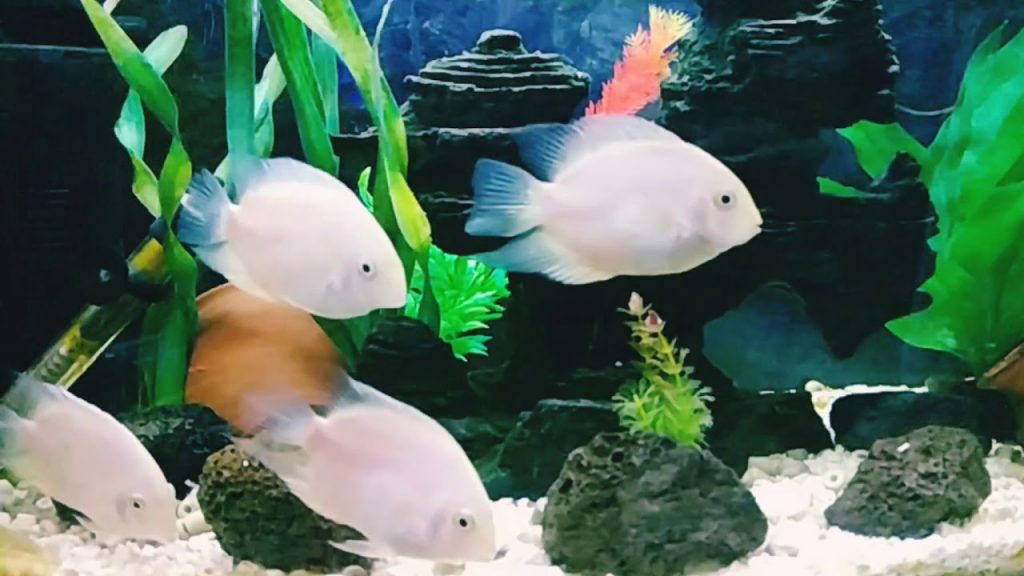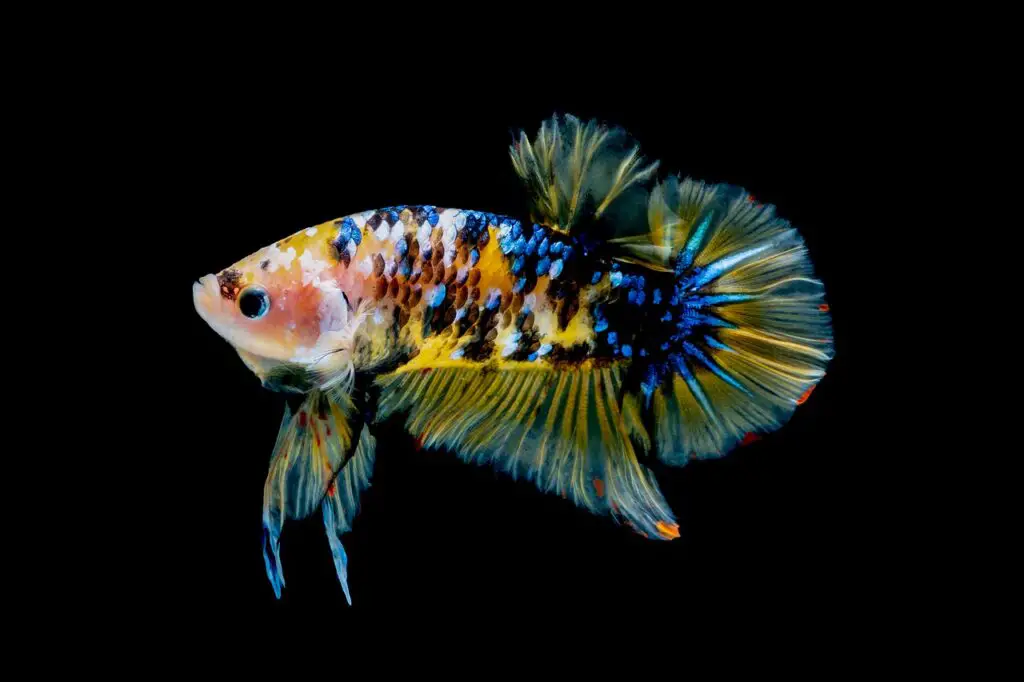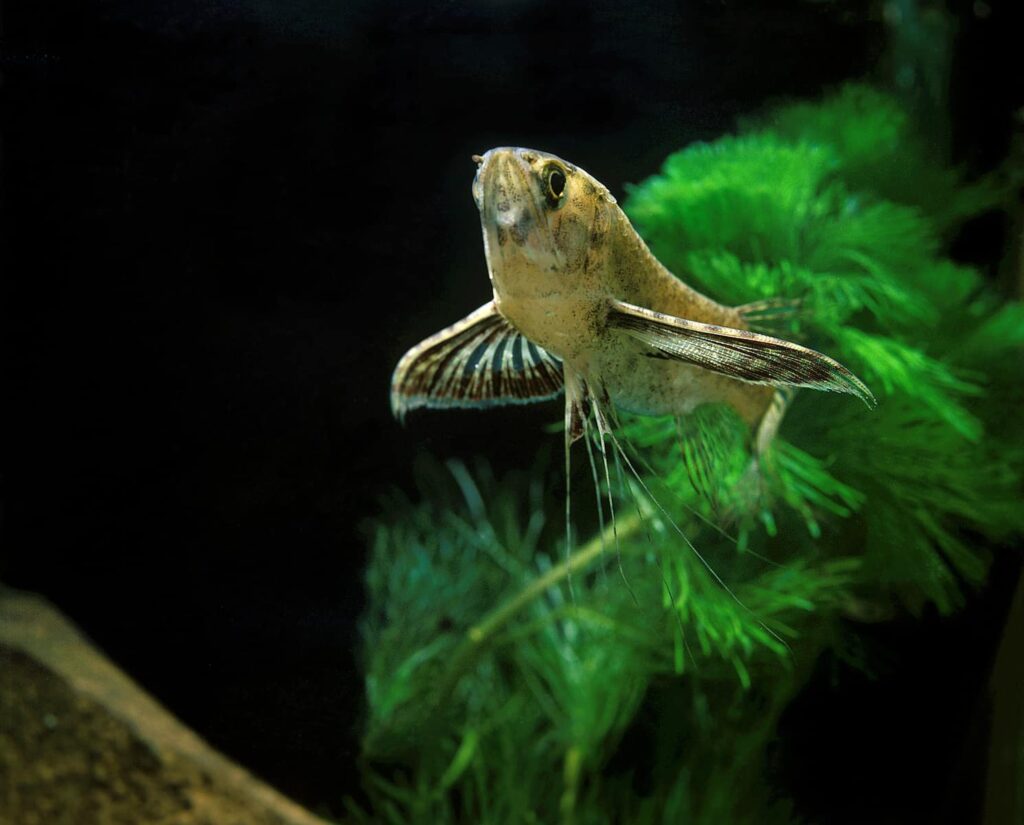Introduction
If you are thinking of keeping white Severum fish, you need to make sure that you know plenty about these fish, how they behave, how big they get, and a lot more.
White Severum fish are gold Severums, but can be exceptionally pale or even white in some situations. Fish that are young or stressed will often be pale, and some individuals remain pale even if they are being kept in suitable conditions, and they are perfectly happy. This is important to recognize.
Appearance ; Behavior
A white Severum fish is usually a particularly pale gold Severum, as this species does not come in white. Although albinos of the species may exist in some cases, this is not thought to be common, and white Severums are therefore likely to be pale versions of the gold Severum.
A white Severum can grow to around 7.5 inches long, and it has pointed anal and dorsal fins. These fish are attractive and look beautiful in a home aquarium, with gold bodies and sandy white tails. Some are striped, too.
In terms of behavior, it depends on the Severum that you have, as some are more social than others. Most are considered antisocial and even aggressive or semi-aggressive, so you should only add one of these fish to your tank after some thorough research.
They are feisty fish and will usually show territorial behavior. Most swim near the surface of the tank, but they may also dig into the substrate and explore the aquarium. They are active during the day, and they appreciate having plenty of hiding spots and live plants to interact with.
At night, they will rest, so it’s best to avoid disturbing them after dark. Constant disruptions to their sleep could leave your fish stressed and more vulnerable to disease.
Severum Cichlid Colors And Varieties
There are 5 different species of Severum cichlids, including the Heros efasciatus, Heros spurius, Heros notatus, Heros liberifer, and Heros severus. These fish look quite different from each other, so you should be able to easily tell them apart if you know what to look for. The colors are one of the most notable differences between the species.
The Heros efasciatus has blue fins, a blue tail, some accents in red, and black stripes that run horizontally along its body.
The Heros spurius has spots and stripes, with a pale background hue all over its body and fins.
The Heros notatus has small spots all over its body and fins, and it comes in yellow, purple, green, or orange. It is sometimes called the spotted Severum.
The Heros liberifer has a base of white, but with orange gleams tinting its scales. It also has black stripes running horizontally across its body.
The Heros severus is the commonest Severum cichlid, and it is likely this one that you are thinking of if you are looking for a white Severum. Its hue tends to be gold or yellow, but it can be very pale in some situations. You might see its color change as it gets older.
Is Severum A Hardy Fish?
Severums are reasonably hardy fish, although they do need the proper conditions, a tank of the correct size, and regular care and maintenance if they are to thrive. If you do not look after your Severums well, they will die, like all fish.
On the whole, however these are hardier than many other species, and this has made them popular among aquarium owners. They must have a minimum of 45 gallons, plus plenty of live plants and decor items to hide in.
Keeping the temperature right will also be critical; these are tropical fish, and they need a minimum temperature of 75 degrees F, with a maximum of 84 degrees F. Ideally, they should be kept between 79 degrees F and 81 degrees F. This makes them more disease resistant and more likely to breed.
Make sure that the water pH is between 6.0 and 6.5 – slightly acidic. You should keep this as steady as possible, as fluctuations will upset your fish and could leave them more vulnerable to diseases or parasites, because they will be stressed.
How Big Do Severum Cichlids Get?
Most Severum cichlids get to around 7.5 inches when they are fully grown, but some may reach as much as 8 inches. You cannot keep this fish in a small tank, and trying to do so will cause stress, disease, and possibly death of the fish.
They tend to reach their full size at around 2 years old or a little sooner.
What Fish Can I Put With Severums?
Because Severums are semi aggressive but not particularly large fish, you have to choose tank mates with care. Anything significantly smaller than them could become prey or a target to attack. Anything significantly bigger may pick on your Severums. These aren’t hyper aggressive fish, especially compared with other cichlids, but they aren’t friendly, either.
Do some thorough research before choosing tank mates, therefore. Some good options include fish like Hoplo catfish, Black Skirt Tetras, Angelfish, and Gouramis. You should make sure that you have plenty of space and lots of decorations before you put Severums in the same tank as any other fish.
Having sufficient space reduces aggression and gives the fish more places to hide and escape to. You may witness some nipping, but as long as the fish have enough room to separate, a few different species can be encouraged to get along.
Try to opt for fish that are approximately the same side as your Severums, as these are more likely to provide the necessary balance. If you choose much bigger or much smaller fish, you will run into issues because the fish will pick on or even eat each other.
Conclusion
Severum fish are popular with aquarium owners, and white Severums are points of curiosity for many – but they aren’t truly white unless you find an albino specimen. In general, a Severum that looks white is actually a gold Severum that has either lost its usual coloring or not yet gained it.



